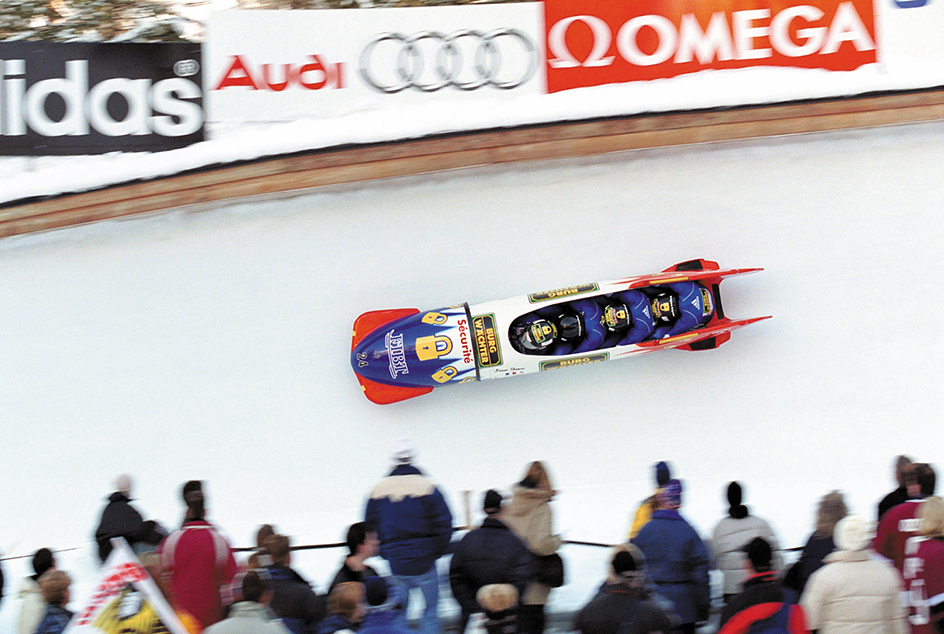Bobsledding is a fast, dangerous winter sport in which teams of two or four persons ride down a steep, icy course in steel and fiberglass sleds. The sleds may reach speeds up to 90 miles (145 kilometers) per hour. The team with the fastest total time after either two or four runs wins the competition.
A bobsled course has sharp turns and banked walls. A typical course ranges from 1,200 meters (1,312 yards) to 1,500 meters (1,640 yards) long.

At the start of the run, the team members line up on a start block. The time starts when the sled passes the timing light 15 meters (16.5 feet) from the start block. The team members push the sled as they run alongside or behind. They jump on after about 50 meters (164 feet). This starting procedure helps to get the sled off to a fast start. The front person steers. The rear person controls braking, which stops the sled at the end of the run. Teamwork is essential to keep the sled on the course and to save the fractions of a second that mean the difference between winning and defeat.
A two-man sled and team can weigh up to 390 kilograms (859 pounds), and a two-woman sled and team up to 350 kilograms (771 pounds). A four-person sled and team can weigh up to 630 kilograms (1,389 pounds). The sport began during the late 1880’s in Albany, New York.
A one-person sled sport called skeleton also uses a bobsled course. In skeleton, riders lie on the sled with their head forward. They steer the sled by the movement of the head and shoulders. The International Bobsleigh & Skeleton Federation governs both sports at the international level.
See also Olympic Games (table: Bobsledding); Skeleton.
